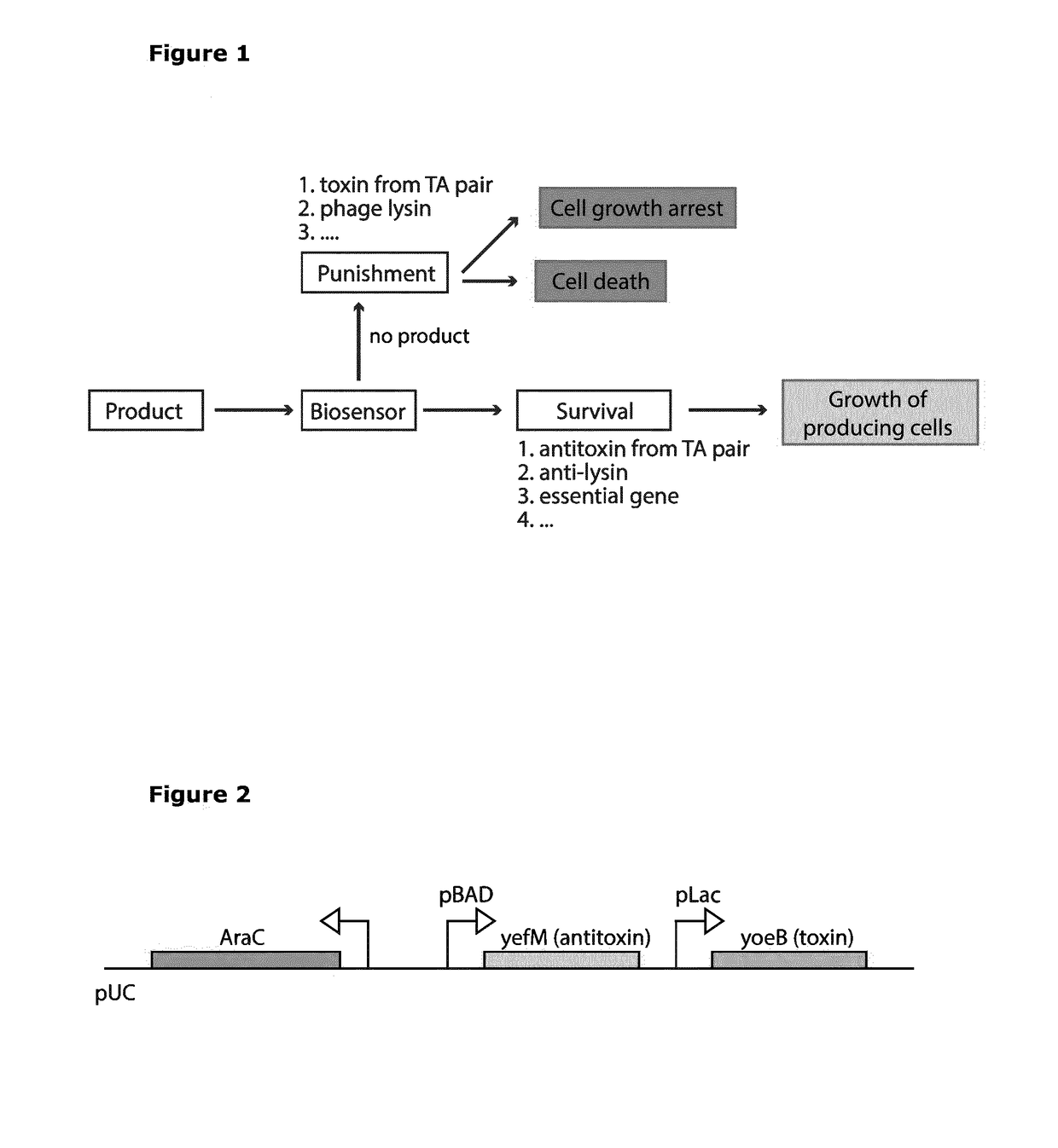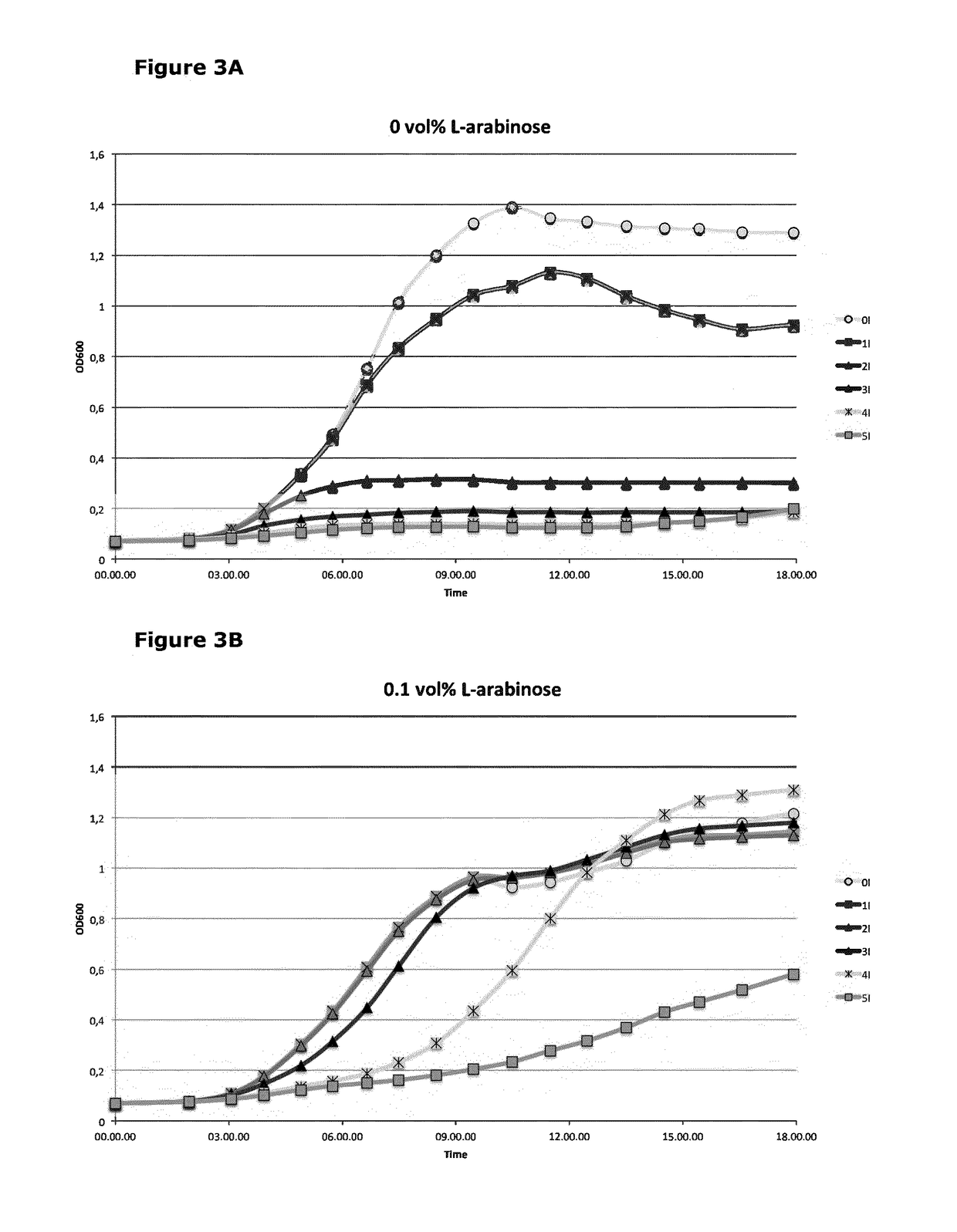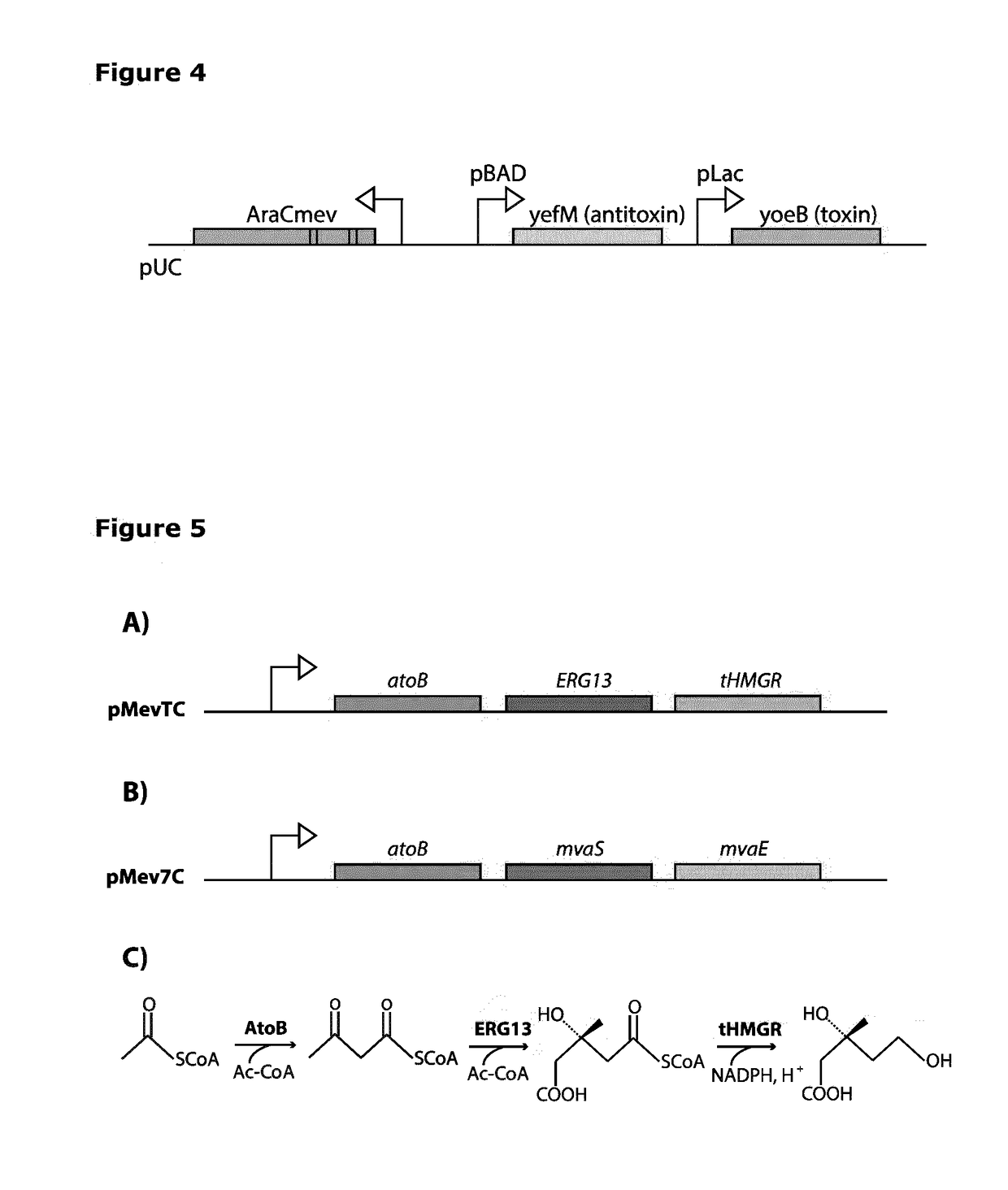A system for improved production titers in fermentations
a technology of production titers and fermentation, applied in the field of system for improving production titers in fermentation, can solve the problems of common observation of non-producing cells, process problems that are similar, and achieve the effect of reducing the fitness cost of metabolic pathways, and reducing the growth rate of microbial cells
- Summary
- Abstract
- Description
- Claims
- Application Information
AI Technical Summary
Benefits of technology
Problems solved by technology
Method used
Image
Examples
example 1
s
1.1 L-Arabinose Addiction Coupled to a Type II TA System is Shown to Control Bacterial Cell Growth
[0096]The yefM-yoeB TA pair comprises two genes, where the yoeB gene encodes a toxin, and the yefM gene encodes its cognate antitoxin (FIG. 2). The YoeB toxin has two properties that serve to block cell growth: 1) acting as an mRNA interferase, and binding to the 50S subunit of the ribosome to block translation initiation; 2) acting as an endoribonuclease, and degrading mRNA independent of the ribosome. When a cognate YefM dimer is expressed, this binds a single YoeB molecule to form a stable complex and thereby prevents the growth inhibitory properties of the toxin. The half-life of the YefM antitoxin is short, since it is rapidly proteolytically degraded (Lon protease). Accordingly, a failure to express the YefM antitoxin leads to release of the YoeB toxin, which in turn arrests cell growth.
[0097]The use of the yefM-yoeB TA pair system to control the growth of bacteria based on L-ara...
example 2 essential
Genes
2.1 L-Arabinose Addiction by Regulated Expression of an Essential Gene is Shown to Control Bacterial Cell Growth
[0119]The essential genes, used to control bacterial growth, are the E. coli genes folP and glmM, which are comprised together within a two-gene operon. The gene glmM encodes a phosphoglucosamine mutase; and the gene folP encodes a dihydropteroate synthase, which is part of the enzymatic pathway leading tetrahydrofolate (vitamin B9) synthesis, which is essential for normal cell growth.
[0120]The native single genomic copy of the essential gene operon folP, g / mM in E. coli host strain XL1, was modified to allow its transcriptional control by the L-arabinose / mevalonate-responsive promoter pBAD. Replacement of the native promoter by the pBAD promoter was engineered by introducing a knockout fragment containing a kanamycin resistance cassette and the pBAD promoter, as illustrated in the cartoon in FIG. 8. An L-arabinose biosensor (AraC) (Table 1) was introduced into the mo...
example 3
h Biosensors Extend the Range of Addiction Molecules for Regulating Cell Growth
3.1 Use of Thiamine Pyrophosphate (TPP)-Sensitive Riboswitch-Controlled TA System to Regulate Bacterial Cell Growth
[0146]A TPP-responsive riboswitch (ThiMN15#19) was engineered into the previously constructed L-arabinose-responsive TA-based correction system (pBAD-TA5 to yield pBAT-TA5). This TPP riboswitch functions as an “ON-type” when in the presence of its ligand TPP, and it is functional at the level of translation. The riboswitch was inserted into the DNA region of the pBAD-TA5 gene construct that encodes the 5′ untranslated region (UTR) of the antitoxin mRNA sequence (FIG. 17). For optimal functionality of the riboswitch, a protein-encoding sequence tet was also added as N-terminal fusion to YefM as it originated from the screen where ThiMN15#19 had been identified. An alternative TPP-responsive riboswitch was constructed, where an “OFF-type” riboswitch was inserted into the DNA region of the pBAD-...
PUM
| Property | Measurement | Unit |
|---|---|---|
| Fraction | aaaaa | aaaaa |
| Time | aaaaa | aaaaa |
| Time | aaaaa | aaaaa |
Abstract
Description
Claims
Application Information
 Login to View More
Login to View More - R&D
- Intellectual Property
- Life Sciences
- Materials
- Tech Scout
- Unparalleled Data Quality
- Higher Quality Content
- 60% Fewer Hallucinations
Browse by: Latest US Patents, China's latest patents, Technical Efficacy Thesaurus, Application Domain, Technology Topic, Popular Technical Reports.
© 2025 PatSnap. All rights reserved.Legal|Privacy policy|Modern Slavery Act Transparency Statement|Sitemap|About US| Contact US: help@patsnap.com



